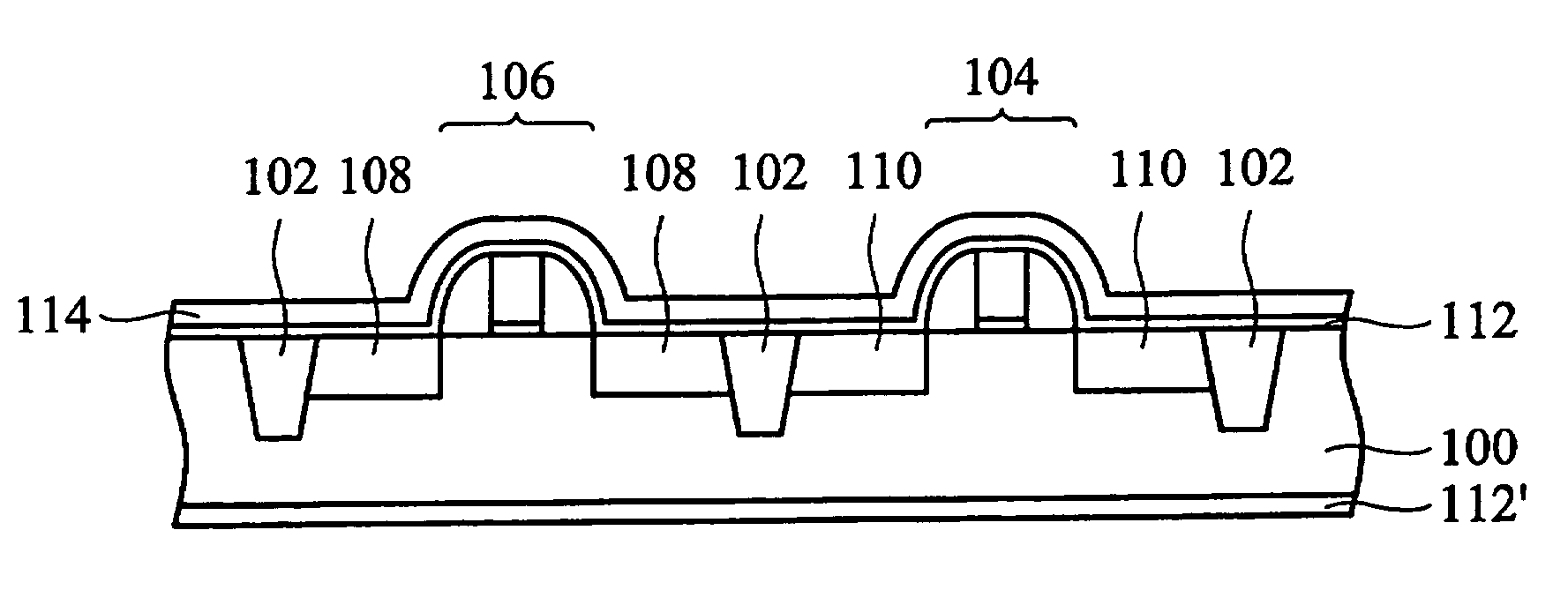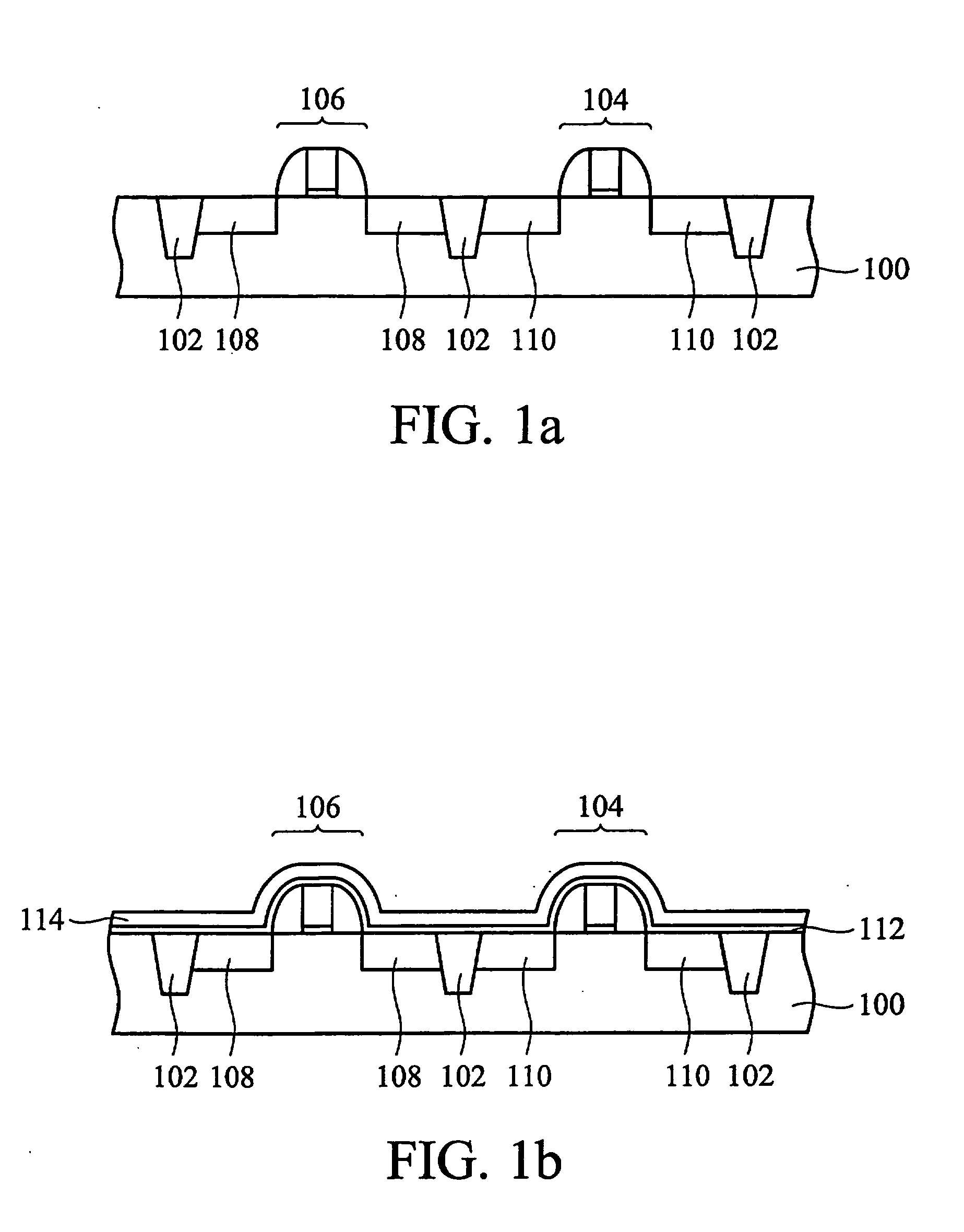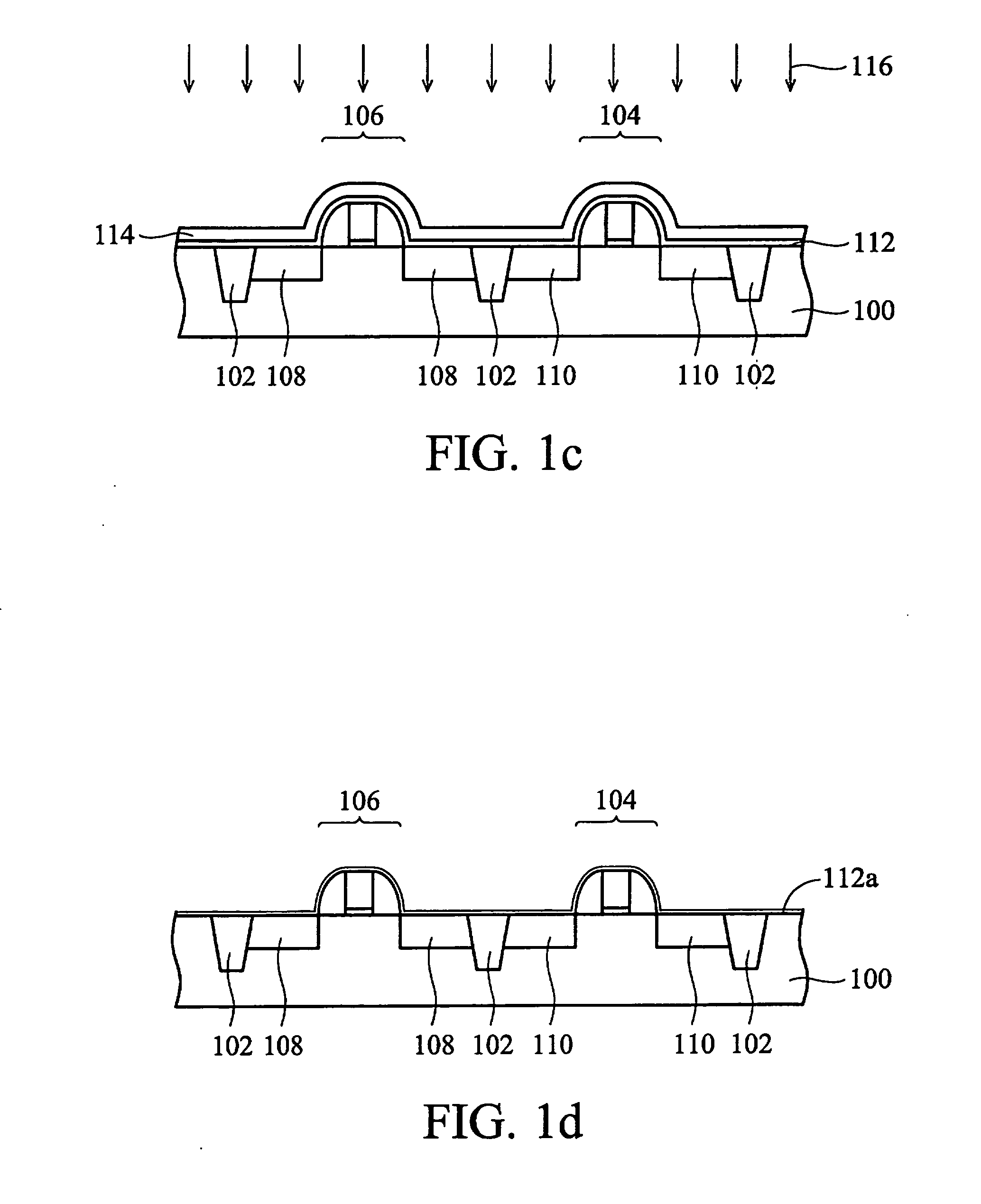Method for semiconductor device performance enhancement
a technology of semiconductor devices and enhancement methods, which is applied in the direction of semiconductor devices, basic electric elements, electrical appliances, etc., can solve the problems of degrading pmos performance, and achieve the effects of enhanced performance, enhanced performance, and enhanced performan
- Summary
- Abstract
- Description
- Claims
- Application Information
AI Technical Summary
Benefits of technology
Problems solved by technology
Method used
Image
Examples
first embodiment
[0025]FIG. 2a˜2i are sectional views showing a first embodiment of fabrication of a CMOS device.
[0026]As shown in FIGS. 2a, 2b and 2c, the elements or procedures using the same numerals are similar to (or the same as) those shown in the FIG. 1a˜1 and thus are not described again. In the first embodiment, the oxide layer 112 is a TEOS oxide layer of 80 angstroms in thickness and the silicon nitride layer 114 has a thickness greater than 200 angstroms. The oxide layer 112 and the silicon nitride layer 114 are formed at 200˜800□. The formation thereof is as described in the comparative example. In other embodiments, the oxide layer 112 has a thickness between 10 and 300 angstroms.
[0027]As shown in FIG. 2d, a photoresist layer 202 is subsequently disposed on the PMOS device 104 and NMOS device 106 and the upper surface of the semiconductor substrate 100. An exposure step 204 is then performed on the photoresist layer 202 overlying the overall semiconductor substrate 100 prior to a devel...
second embodiment
[0035]The second embodiment is similar to the first embodiment, except that a silicon nitride layer 114 of 350 angstroms is employed (referring to FIG. 2a). Specifically, the second embodiment is suitable for 65 nm generation and the thickness of the silicon nitride layer 114 can be between 200-350 angstroms depending on a pitch between the PMOS and NMOS devices.
third embodiment
[0036]The third embodiment is similar to the first embodiment, except that a silicon nitride layer 114 of 500 angstroms is employed (referring to FIG. 2a). Specifically, the third embodiment is suitable for the 90 nm generation and the thickness of the silicon nitride layer 114 can be between 200˜500 angstroms depending on a pitch between the PMOS and NMOS devices.
[0037]The following fourth embodiment comprises a method for preventing charge accumulation in a semiconductor device. The charge is generated from an electrostatic chuck (e-chuck) stage of an apparatus and may accumulate within the semiconductor substrate of the described comparative example or embodiments, affecting the reliability of the semiconductor device.
PUM
 Login to View More
Login to View More Abstract
Description
Claims
Application Information
 Login to View More
Login to View More - R&D
- Intellectual Property
- Life Sciences
- Materials
- Tech Scout
- Unparalleled Data Quality
- Higher Quality Content
- 60% Fewer Hallucinations
Browse by: Latest US Patents, China's latest patents, Technical Efficacy Thesaurus, Application Domain, Technology Topic, Popular Technical Reports.
© 2025 PatSnap. All rights reserved.Legal|Privacy policy|Modern Slavery Act Transparency Statement|Sitemap|About US| Contact US: help@patsnap.com



